Essential Pest Control Equipment and Supplies Guide
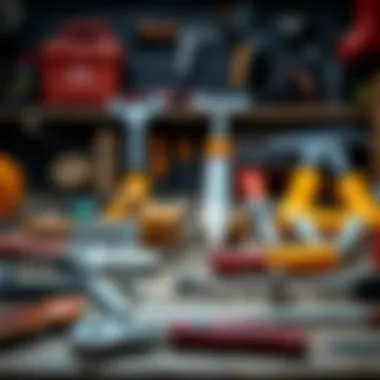

Intro
In the world of homeownership, pest control is often an overlooked aspect until those unwelcome intruders make their presence known. Whether it’s tiny ants marching across the kitchen counter or the unsettling sight of roaches scuttling away, the need for effective pest control becomes glaringly obvious. This guide holds the key to understanding pest control equipment and supplies, designed for homemakers and homeowners alike who want to tackle these nuisances head-on.
Pest control is not just about exterminating pests; it's about understanding their behavior and implementing proactive measures to mitigate infestations. Knowing the right tools and supplies can make all the difference in maintaining a clean, safe home. By arming yourself with the information outlined here, you can take informed steps toward creating a pest-free environment that’s also kind to Mother Nature.
As we move through various facets of pest control, from identifying common pests lurking in your home to discovering do-it-yourself remedies and prevention methods, remember that a well-rounded knowledge enhances one’s ability to combat these pesky critters. It’s time to delve into the nitty-gritty of pest identification.
Preamble to Pest Control Equipment Supplies
Pest control has become a vital aspect of maintaining healthy living spaces. As homes become more intertwined with nature—think charming gardens and yard saplings—so too does the risk of pests creeping in. Understanding pest control equipment supplies is not just useful; it’s essential for any homeowner looking to protect their sanctuary. This article dives into the significance of the right tools and techniques in managing unwanted critters that threaten both comfort and cleanliness.
The Role of Equipment in Pest Management
Efficient pest management hinges fully on using appropriate equipment. Having the right tools at hand can be the difference between a small problem that resolves easily and a creature catastrophe. For instance, consider the humble trap. A well-placed mouse trap can eliminate pests without resorting to toxic chemicals. This shifts the focus to proactive measures rather than reactive fear of infestations.
Moreover, equipment aids effectiveness. For more serious infestations, tools like foggers and sprayers allow for thorough coverage of affected areas. This is particularly important in households with pets or young children, where safety is paramount. Safe and effective equipment, therefore, not only ensures pest eradication but also upholds the wellbeing of the household members.
Historical Overview of Pest Control Tools
Pest control tools have evolved significantly over the centuries. Ancient Egyptians, for instance, would use traps made of clay to catch rodents, while the Chinese documented the use of substances derived from natural resources to deter insects. Fast forward to the early 19th century, and you find the introduction of mechanical traps and chemical pesticides.
This transformation reflects changing agricultural practices and residential needs. For example, the development of pest control sprayers in the mid-20th century revolutionized how farmers treated their crops. Homeowners began to adopt these innovative tools, allowing them a more proactive stance against pests in residential settings as well.
Today, the focus has expanded with a nod toward eco-friendly husbandry. The historical transition from rudimentary methods to modern equipment emphasizes the importance of researching suitable supplies for successful pest management. This evolution signifies not just progress in product efficiency, but also a growing awareness of environmental impacts and sustainability in pest control practices.
"Understand your equipment; it can be your safespace in harnessing pest control effectively."
As we dive deeper into the types of pest control equipment available, understanding its history and role helps homeowners make informed choices tailored to their needs.
Types of Pest Control Equipment
Understanding the various types of pest control equipment is crucial for effective pest management. These tools not only enhance the efficiency of pest control measures but also contribute to safety and compliance with regulations. With a wide array of options available on the market, knowing what each type can offer, including their strengths and weaknesses, can help homeowners, DIY enthusiasts, and professionals make informed decisions when it comes to pest elimination and prevention.
Mechanical Tools
Mechanical tools are the backbone of pest control, serving as the physical means through which pests are trapped or repelled. Their straightforward nature makes them easy to use, and often, they do not rely on chemicals, providing a more environmentally friendly option.
Traps and Baits
When dealing with pesky critters, traps and baits stand out for their simplicity and efficiency. These are designed to lure and capture insects and rodents, reducing their populations effectively. An important characteristic of traps is their versatility; they come in various forms such as snap traps, glue traps, and live traps. This flexibility allows users to select methods tailored to specific pests.
One unique feature is the use of attractants in baiting systems, which can significantly increase catch rates. However, traps may not always be suitable for larger infestations where immediate and extensive control is needed. Still, their low environmental impact and the absence of toxins often make them a popular choice.
Sprayers
Sprayers are indispensable tools in any pest control kit, particularly for treatments covering larger areas. The advantage of using sprayers lies in their capacity to apply insecticides, fungicides, and even herbicides evenly across a given space, ensuring every nook and cranny is treated. Many sprayers offer adjustable nozzles, allowing users to customize the pressure and spread of the chemical being applied.
A distinguishing feature of sprayers is their portability; handheld models are lightweight and user-friendly, while backpack models can hold larger volumes, perfect for expansive yards or gardens. However, improper use can lead to overspray and harm beneficial insects, necessitating a cautious approach to spraying.
Foggers
For those tackling significant pest issues, foggers emerge as powerful allies in pest control efforts. Foggers produce a fine mist of insecticide, able to permeate hard-to-reach areas where pests hide. Their primary role is in treating larger spaces, making them suitable for both indoor and outdoor applications.
What sets foggers apart is their ability to disperse chemicals effectively over substantial areas, which can be a game changer in eliminating stubborn infestations. However, with this power comes the responsibility of ensuring safety precautions are followed, as improper handling may result in excessive exposure to the chemicals released into the air.
Chemical Supplies
Chemical supplies form a cornerstone of effective pest management, particularly when mechanical solutions fall short. Knowledge of various chemical supplies can guide individuals in making educated choices while ensuring their actions remain safe for their surroundings.
Insecticides
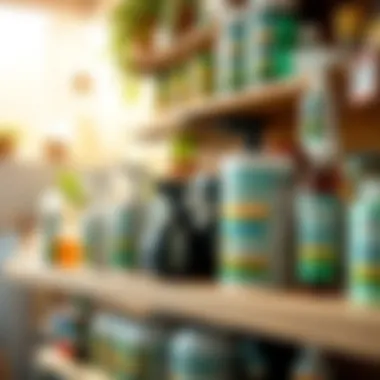

Insecticides are pivotal for dealing with insect infestations. These substances are designed to kill or deter insects, ranging from common household pests like ants and roaches to more formidable adversaries like termites. A defining feature of insecticides is their wide variety—over-the-counter options are available for home use, while stronger formulations may require professional applications.
The advantage of insecticides is their quick action; they often show visible results within hours. On the flip side, misuse can lead to adverse health effects for humans and pets, emphasizing the need for careful handling and adherence to labeled instructions.
Pesticides
While insecticides target insects specifically, pesticides encompass a broader category, including substances that manage weeds, fungi, and other unwanted organisms. The use of pesticides is significant, especially for outdoor spaces where weeds can disrupt garden aesthetics and crop yields. A key aspect of pesticides is their formulation, which can vary from systemic varieties that are absorbed by plants to contact pesticides that affect pests on direct contact.
Though beneficial, the extensive use of pesticides in gardens raises concerns about environmental impacts and pesticide resistance, making targeted applications crucial for sustainable practices.
Herbicides
Those looking to tackle unwanted plants will find herbicides invaluable. They are specifically designed to eliminate or suppress weeds that compete with desired flora for nutrients, light, and water. The key characteristic of herbicides is their selectivity; some are broad-spectrum while others are more specific, targeting only certain plant types.
A unique feature of herbicides is their pre-emergent and post-emergent varieties, with pre-emergent applications preventing weed growth from the outset. However, the misuse or overuse of herbicides can pose ecological risks and adversely affect soil health.
Safety Equipment
Protecting oneself during pest control operations is paramount, thus, safety equipment cannot be overlooked. Employing the right safety equipment safeguards individuals from chemical exposure and enhances overall safety in pest management practices.
Protective Clothing
Protective clothing, such as coveralls, goggles, and gloves, is essential to shield against direct exposure to chemicals used during pest control. These garments are designed with specific materials that provide barriers, minimizing the risk of chemical burns or irritations. The key aspect of protective clothing is their breathability and comfort, allowing users to work for extended periods without discomfort.
While protective clothing can significantly reduce the risk of exposure, they must be properly maintained and cleaned after use to ensure their effectiveness.
Respirators
Respirators are critical pieces of equipment when dealing with pesticides and insecticides that emit harmful vapors. The key characteristic of personal respirators is their filtration capability; they can protect lungs by filtering out harmful particles and chemicals from the air. High-quality respirators can dramatically decrease the likelihood of respiratory issues or chemical inhalation.
While essential, it's vital to regularly inspect and replace filters to maintain their protective capabilities.
Gloves
Finally, gloves offer a first line of defense against potential chemical hazards. Utilizing gloves made of appropriate materials, such as nitrile or rubber, ensures that hands remain protected from toxic substances while applying pest control products. They provide a necessary barrier, reducing the risk of dermal exposure.
Though wearing gloves is a generally straightforward precaution, neglecting proper disposal or cleaning practices can defeat the purpose of wearing them in the first place.
Choosing the Right Equipment for Your Needs
When it comes to tackling pest problems, the right equipment can make all the difference. Selecting suitable tools not only maximizes effectiveness but also ensures safety for you and your surroundings. The first step in this journey involves assessing the specific challenges you face.
Assessing Your Pest Problem
Identifying Pest Species
Understanding which pests are invading your space is crucial. Different pests require different handling techniques, and solutions that work well for one species might not be effective for another. For instance, a cockroach infestation will necessitate a different approach compared to dealing with termites.
Identifying pest species involves more than just spotting the intruders. You must analyze their behavior, habitat preferences, and signs of their presence. For example, droppings, shed skins, and nests are tell-tale signs that can help in pinpointing the specific species. Utilizing resources such as local pest control databases or extension services can enhance your identification capabilities.
For house owners, proper identification becomes a key starting point in establishing an effective pest control plan. It's often said, "Knowing your enemy is half the battle." This rings especially true in pest management, as proper identification sets the stage for selecting appropriate pest control equipment and techniques. However, misidentifying a pest can lead to wasted time and money, making this step invaluable.
Understanding Infestation Levels
The level of pest infestation dictates not just the approach you'll take, but also the type of equipment you'll need. Low-level infestations may allow for mechanical traps or baits, while severe infestations could mean you need more aggressive chemical solutions.
Understanding infestation levels means assessing both the size and duration of the pest problem. Some pests breed quickly, so recognizing the signs before they escalate can save a lot of headaches. For instance, a few ants at the entrance of a home might not require the same response as an entire colony invading the kitchen.
In pest control, being proactive can save you from larger damages down the line. A solid grasp of how infestations evolve can guide your equipment choices, ensuring they align with your needs precisely.
Equipment Selection Criteria
When choosing the right equipment, there are several important factors to consider. In this realm, efficacy, safety, and cost efficiency play crucial roles.
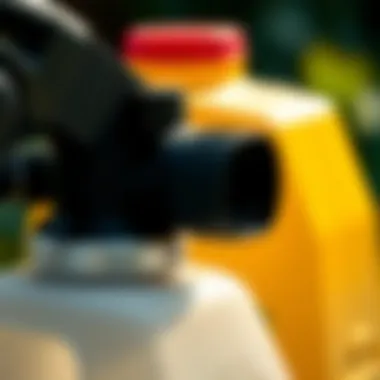

Efficacy
Efficacy refers to how well a piece of equipment or a pest control method works against intended pests. A product that claims to eliminate a certain pest but fails to deliver will just end up causing frustration. Therefore, reading reviews and potentially trialing equipment where possible is key.
In this article, emphasizing efficacy is beneficial as it is critical for making informed choices. For example, some pesticides may eradicate surface pests but lack the depth needed to reach those that burrow deep into wood or walls. Long-lasting effectiveness becomes paramount, especially in situations where reinfestation can occur shortly after application.
Safety
Safety always comes first—this rings true not just for you, but also for your family and any pets you may have. Equipment and chemicals should be handled with utmost care to prevent accidental harm.
Safety considerations should influence your equipment selection. Products designed with safety features, like child-proof containers and less harmful chemicals, tend to be favored in modern pest management. Thoroughly understanding the safety profile of your chosen equipment is crucial, as every pest control strategy should place a high priority on human and environmental safety.
Cost Efficiency
Cost can often be a tipping point in choosing pest control equipment. Going for the cheapest option might seem appealing, but if it fails to work, it may lead to higher expenses down the road. Evaluating potential long-term costs alongside the upfront price can reveal a more comprehensive picture.
Investing in effective pest control equipment tends to yield better results in the long run, saving both hassle and money. Additionally, some products may be marketed at a higher price point due to their lasting efficiency—clearly illustrating how initial investments can be counter-balanced by reduced needs for ongoing treatments.
Choosing the right equipment for pest control is a critical decision that affects not only the immediate situation at hand but also future pest management strategies. Assessing the pest problem, understanding infestation levels, and evaluating equipment selection criteria are essential aspects of creating a successful pest control plan.
Sustainable Pest Control Practices
Sustainable pest control practices are increasingly crucial in today’s environmentally conscious world. These practices aim to minimize the adverse effects of pest management on human health, wildlife, and the broader ecosystem. By integrating sustainable methods, individuals can protect their homes from pests while also ensuring that the planet's resources are conserved for future generations.
One major aspect of sustainable pest control is to consider alternative strategies rather than relying solely on chemical treatments. This approach not only helps in safeguarding beneficial insects but also reduces the chances of pests developing resistance to traditional pesticides.
Integrated Pest Management (IPM)
Role of Equipment in IPM
Equipment plays a pivotal role in integrated pest management (IPM), a holistic strategy that combines various management approaches to control pest populations efficiently and sustainably. The use of specific tools like monitors and traps allows for the accurate assessment of pest levels, facilitating smart decisions based on real data rather than guesswork.
For instance, the application of monitoring devices helps in determining the types of pests and their abundance. This informed strategy ensures minimal impact on non-target species and promotes a more effective plan tailored to the specific situation. Such characteristics make IPM an attractive choice in modern pest management philosophies.
However, it's crucial to understand that while equipment is beneficial, it requires proper training and knowledge to use effectively. Misuse can lead to ineffective pest control or unintended damage to the ecosystem.
Benefits of IPM Approach
The benefits of the IPM approach are wide-ranging and significant. Firstly, it enhances pest control effectiveness by promoting a thorough understanding of pest behavior and biology. This targeted approach reduces unnecessary pesticide application, thus preserving beneficial insects and their respective ecosystems.
A key feature of IPM is its flexibility in implementation. Homeowners can adjust their control measures based on seasonality and specific pest dynamics, which makes it a more adaptable choice. Furthermore, engaging in IPM can save money in the long run by reducing the cost associated with frequent pesticide purchases and potential pest-related damages.
However, implementing IPM can require a more considerable initial investment in equipment and training. Still, the long-term sustainability and ecological benefits often outweigh the upfront costs, securing its place as a central theme in modern pest control.
Eco-Friendly Equipment Options
Biological Controls
Biological controls are an essential eco-friendly option in pest management. This method involves utilizing natural predators or pathogens to keep pest populations in check, working in harmony with nature rather than against it.
One of the standout characteristics of this technique is its sustainability. By promoting bio-diversity, biological controls not only address pest issues but also contribute to a healthier ecosystem. For instance, introducing ladybugs can significantly reduce aphid populations without resorting to chemical pesticides.
However, there are limitations to biological controls. They can be slower to take effect compared to chemical alternatives, necessitating patience and understanding from the property owner.
Plant-Based Insecticides
Plant-based insecticides represent another sustainable option for pest control. Derived from natural sources, these products often show less toxicity to humans, pets, and beneficial insects than synthetic counterparts.
A key selling point for plant-based insecticides is their eco-friendliness. They are generally biodegradable and reduce the chemical footprint in the environment. This aspect makes them appealing to environmentally conscious homeowners wanting to avoid harsh chemicals.
Nonetheless, it is essential to note that plant-based insecticides may need to be applied more frequently to maintain their efficacy, which can increase the overall labor required and, thus, cost.
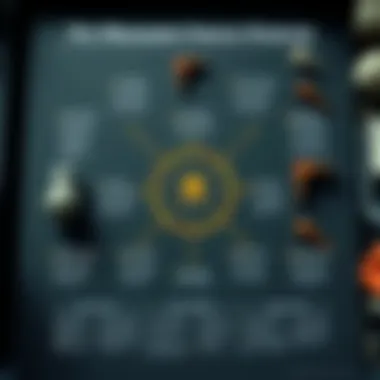
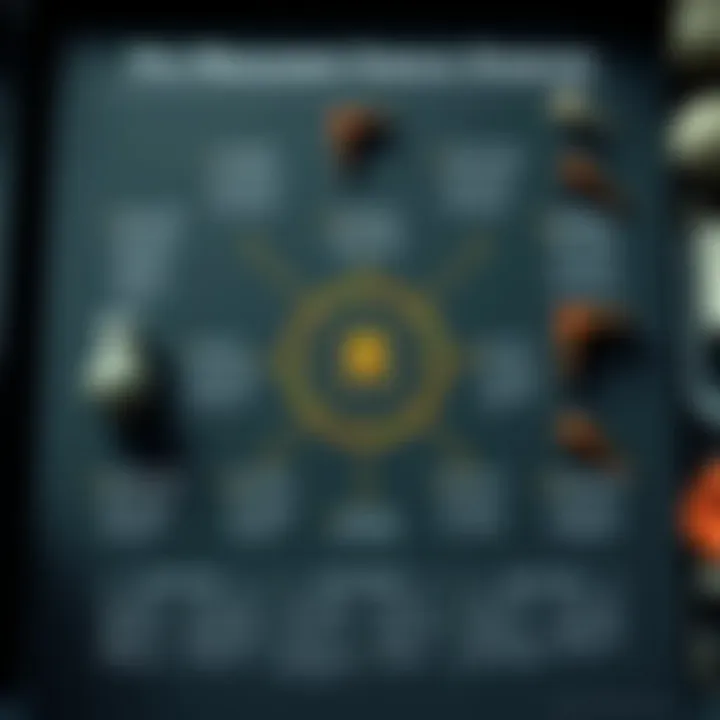
Maintaining Pest Control Equipment
Maintaining pest control equipment is crucial not just for prolonging the life of the tools, but also for ensuring the effectiveness of pest management efforts. Equipment that is clean and well-maintained tend to work better, ultimately leading to more successful pest control outcomes. Additionally, lack of maintenance can result in not only ineffective treatments but also health and safety hazards, as malfunctioning tools can pose risks to users and the environment. Whether you are a homeowner or a professional, prioritizing the maintenance of your pest control toolkit sets the groundwork for effective implementations down the line.
Regular Maintenance Practices
Cleaning Tools
Cleaning tools is at the heart of maintaining pest control equipment. Regularly removing dirt, chemical residues, and organic materials helps in maintaining the integrity and effectiveness of tools. Consider the sprayers or traps you may use routinely. For instance, a sprayer clogged with residue will not distribute chemicals efficiently, leading to insufficient pest control.
The key characteristic of effective cleaning tools lies in their ease of use and ability to reach tight spaces often hidden from plain sight. This makes them a popular choice, particularly for homeowners who want to ensure that their cleaning process does not become another chore itself. Furthermore, using appropriate cleaning agents can enhance the lifespan and performance of your equipment.
One unique aspect to keep in mind is that improper cleaning or neglect could lead to corrosion or buildup that can reduce the efficiency of the equipment. Therefore, while it might seem like a hassle, dedicating time to proper cleaning can save you money in the long-run and improve pest control results.
Checking for Damage
Checking for damage is another necessary step in the maintenance of pest control equipment. Regular inspections of tools can help identify any wear and tear that may hamper their performance. For instance, ensuring that hoses are intact and sprayers are functioning correctly can be the difference between an effective pest management session and a wasted effort.
The essential part of checking for damage is its preventive nature. Identifying issues before they become severe can help in avoiding costly repairs or replacements. Homeowners and pest control professionals alike value this step, understanding that a small crack in a tool can lead to major malfunctions during critical times.
Unique to this practice is how it fosters a more mindful approach toward maintaining equipment. By regularly checking, users become more attuned to their tools, allowing them to spot anomalies that may develop over time. While initial inspections may require time and effort, the benefits of catching issues early make this a priority.
Storage Guidelines for Supplies
Safe Storage Solutions
Safe storage solutions are key in maintaining the efficacy of pest control supplies. Properly storing chemicals and equipment in a cool, dry place away from direct sunlight prevents degradation of both tools and materials. Ensuring that pest control products are stored in child-proof, clearly labeled containers also protects household members from accidental exposure.
This approach emphasizes the commitment to safety and environmental responsibility, making it a preferred method for many homeowners. One unique feature of safe storage solutions is the impact they have on prolonging the shelf life of products and maintaining their effectiveness. While it may seem simple to store tools haphazardly in a shed, this practice can shorten their usability and safety.
Labeling and Organization
Labeling and organization play a critical role in managing your pest control supplies. When tools and products are clearly labeled, it saves time and confusion when choosing the right item for a given task. A well-organized storage space also reduces the chances of accidental misuse of products. For instance, knowing where to find that specific insecticide can make a significant difference in managing an infestation swiftly.
The standout characteristic of good labeling practices is their ability to inform and guide users through their pest control efforts. This organization also encourages a proactive stance towards pest management, as it minimizes the chances of scrambling through piles of disorganized equipment during an urgent need. Unique to this method is its contribution to sanity; nothing is worse than waiting for an emergency solution while searching through an unkempt toolbox.
Future Trends in Pest Control Equipment
Understanding future trends in pest control equipment is crucial for anyone involved in the industry or even just managing pests at home. As technology advances, so do the tools and methods used to tackle pest issues. This section delves into crucial innovations that promise to enhance efficiency and effectiveness in pest management while being mindful of sustainability.
Technological Advances
Smart Pest Control Devices
Smart pest control devices are becoming increasingly popular due to their automation capabilities. These devices can monitor pest activities, providing real-time data that homeowners or professionals can use to make informed decisions. A key characteristic is their ability to be controlled via smartphone applications; this means you can manage your pest control efforts, even while sitting on your couch.
One unique feature of these devices is their use of sensors that detect pest movements. If a rodent trips a sensor, you get an instant alert on your phone. This immediacy allows for quicker action, reducing the chance of a full-blown infestation. Although these devices can be pricier than traditional methods, their advanced monitoring and management capabilities are well worth the investment for many.
Drones in Pest Management
Drones are another cutting-edge tool finding their way into pest control. They offer a bird's eye view of your property, which is particularly advantageous for large areas, such as farms or gardens. The key characteristic of drones is their ability to survey difficult-to-reach spots with high precision, capturing images and data that inform pest control decisions.
A standout feature of using drones is their capability to disperse treatments across vast areas, saving time and effort. However, while they grant ease and precision, learning to operate drones can require a learning curve. Additionally, there are regulations about their use that must be navigated, especially in residential settings.
Research and Development
Emerging Eco-Friendly Supplies
The shift towards eco-friendly supplies is gaining momentum, influenced by increasing consumer awareness of environmental issues. Emerging eco-friendly products aim to effectively manage pests while minimizing harm to the ecosystem. A defining trait of these supplies is their reliance on natural ingredients, making them safer for use around children and pets.
One such product could include insect repellents formulated with plant-based extracts instead of harsh chemicals. The advantages are clear: they reduce the risk of chemical exposure in your home. However, they may not always deliver the immediate results seen with conventional solutions, requiring patience and possibly repeated applications.
Consumer Preferences and Innovations
Consumer preferences are steering innovations in pest control. People today desire safer, more sustainable solutions, nudging companies to tailor their products accordingly. A key factor is the push for transparency in ingredients used. Consumers increasingly want to know what goes into the products they use in their homes.
This shift has led to the development of pest control options that are both effective and environmentally friendly. Furthermore, companies that cater to this trend often emphasize packaging and formulation. While these eco-conscious choices can sometimes come with a higher price tag, many homeowners are willing to invest in safer alternatives that align with their values.
The future of pest control lies in the seamless blend of technology and eco-friendliness. Keeping informed about these trends can lead to more effective and responsible pest management strategies.















